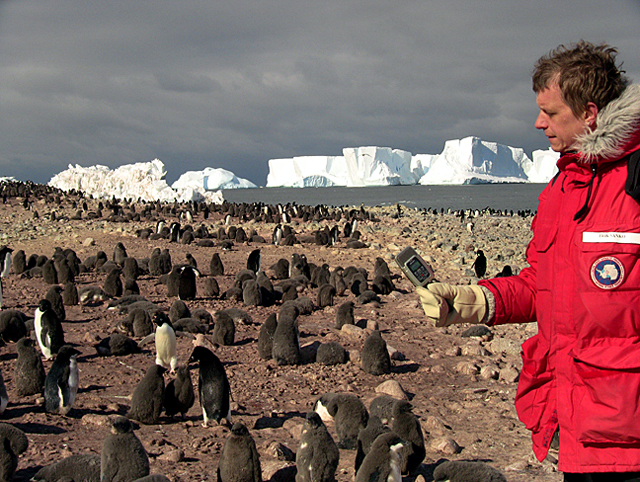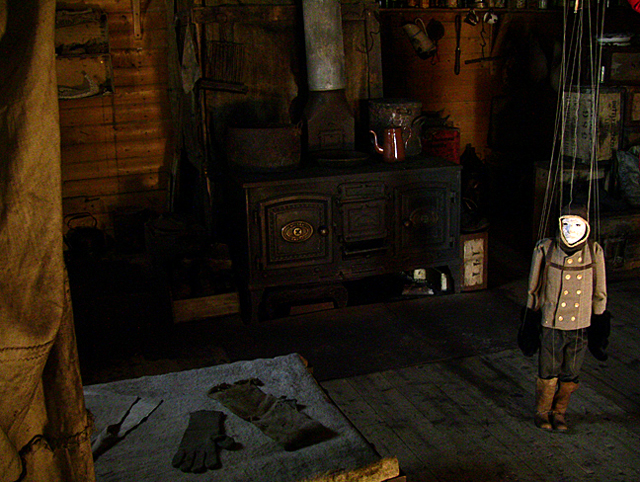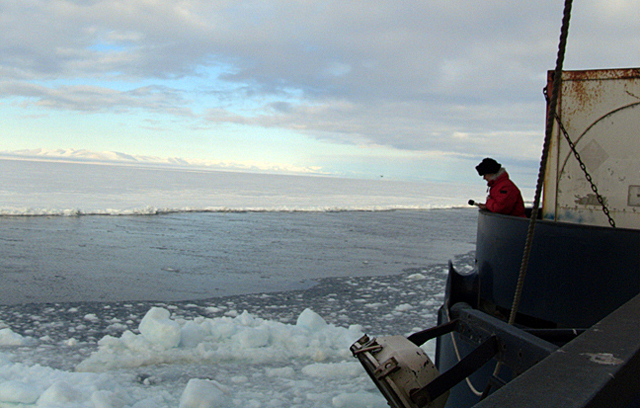Pulling the stringsTheater duo creating marionette show about ShackletonPosted July 23, 2010
Dozens of artists and writers — from painters and poets to filmmakers and photographers — have visited Antarctica over the years at the invitation of the National Science Foundation (NSF) Their output under the Antarctic Artists and Writers Program But it’s safe to say that no one has done a marionette puppet production about Antarctica. Until now. Jessica Grindstaff and Erik Sanko The multimedia production will tell the story of how Shackleton and his hardy crew survived being shipwrecked in Antarctica, featuring marionette puppets created by Sanko, who is also a musician and fronts the band Skeleton Key In fact, it was while walking through New York City on a hot summer day and discussing set designs — how to stage a life-size marionette show while obscuring the puppeteers from the action — that the two artists envisioned a white backdrop and a black ship. Both immediately recognized the iconic image of Shackleton’s ship trapped in the pack ice of Antarctica by Australian Frank Hurley, who was the expedition’s official photographer. “It was all based on image and staging,” Grindstaff said by phone from New York not long after a couple of sold-out workshop performances of 69° South at the Massachusetts Museum of Contemporary Art. “We fell in love with the relationship and community all of these men had together. That’s what got them through the situation,” she explained. The Endurance expedition, more impressively called at the time the Imperial Trans-Antarctic Expedition 1914–17, was perhaps the most heroic tale of failure that came out of the Heroic Age of Antarctic Exploration. Shackleton’s objective was to cross from sea to sea via the South Pole — but it never happened. His ship became stuck in the pack ice in the Weddell Sea, which eventually crushed and sank the wooden vessel. The stranded crew of 28 floated with the ice and eventually reached Elephant Island, from where Shackleton and five others braved an 800-mile open-ocean crossing to South Georgia Island. From there, Shackleton mounted a rescue of the men from Elephant Island after crossing the rugged terrain to a whaling station. Everyone survived. Grindstaff explained 69° South would juxtapose Shackleton’s journey with modern life, and how people today view leadership and community. “I think [audiences] will relate to the heroism that Shackleton represents,” she said. The idea of actually visiting Antarctica didn’t come until later, and as Grindstaff delved deeper into her research, she realized a trip to the Ice would be essential for the production. “Our visit to Antarctica became so integral to the project that I didn’t know how we would move forward with it in the same way without the visit,” she said. “I felt it wouldn’t be as authentic, and I wouldn’t be able to show the Antarctica that we really wanted to show.” Sanko and Grindstaff were particularly interested in the concept alluded to by Shackleton himself — and later immortalized in T.S. Eliot’s epic poem “The Waste Land” — that some sort of presence walked beside him on his trek across mountainous South Georgia Island. Or, as Eliot famously wrote, “Who is the third who walks always beside you?” “Erik and I were very interested in this idea of the third presence in Antarctica,” Grindstaff said. “That was part of the reason why we went there — to get a sense of what it was they were referring to. What we found is that it’s kind of the energy of the continent. It’s such a living, breathing place.” The couple went down to the Ice in January for three weeks. Grindstaff shot video and stills for documentation purposes, while Sanko recorded the creaks, whistles and crunch sounds of the continent. Their journey took them to the edge of the sea ice and to the McMurdo Dry Valleys. A trip aboard the Swedish icebreaker Oden to Beaufort Island, home to an Adélie penguin colony of about 40,000 breeding pairs, offered Grindstaff an up-close look at icebergs and how she might work them into the production. “The sights and sounds on that were completely mind-blowing,” she said. Indeed, the visit promises to not only change the look and feel of 69° South but its heart and soul as well. The second half of the play originally had a pessimistic view of the future of Antarctica and the planet, with humanity subjugating the environment. But after seeing how people manage the Antarctic, Grindstaff said she and Sanko want to show that it is possible to respect and honor the landscape. “I got a pretty big burst of hope when I went down there. I think we’re infusing a little bit of that hopefulness into the show than we previously were going to put in it,” she said. NSF-funded research in this story: Jessica Grindstaff and Erik Sanko, Antarctic Artists and Writers Program, Award No. 0840155 |



For USAP Participants |
For The Public |
For Researchers and EducatorsContact UsU.S. National Science FoundationOffice of Polar Programs Geosciences Directorate 2415 Eisenhower Avenue, Suite W7100 Alexandria, VA 22314 Sign up for the NSF Office of Polar Programs newsletter and events. Feedback Form |




